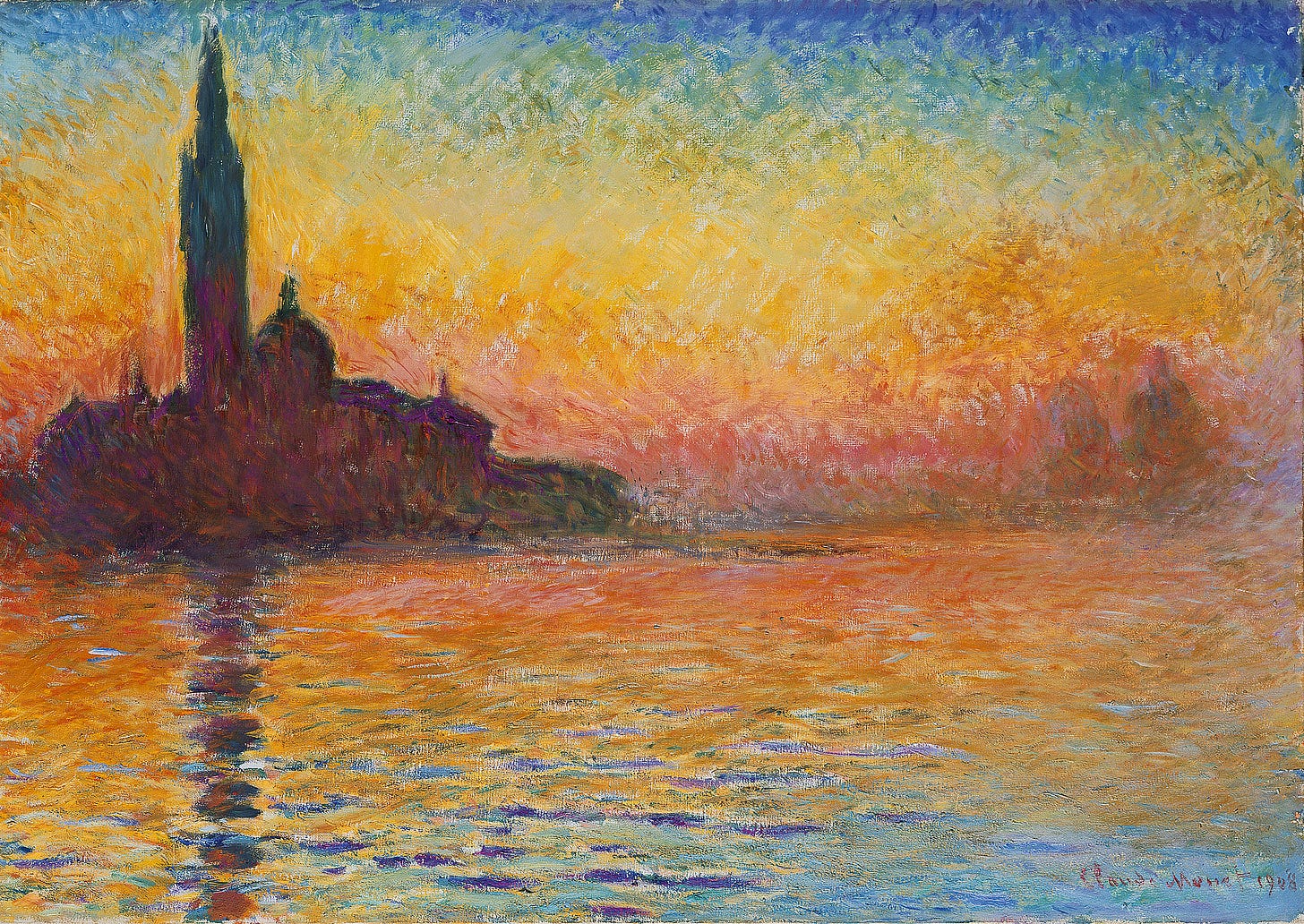#51. SUNSET / POSTA DE SOL
To wait Eternity is short If Love reward the end / Esperar l’Eternitat es fa curt si l’Amor recompensa el final
To wait an Hour—is long—
If Love be just beyond—
To wait Eternity—is short—
If Love reward the end—
Emily Dickinson
SUNSET
Eroticism, seduction, melancholy, magic, obscurity and calm. The sunset is characterized by indetermination and ambivalence. It is a nowhere land, between day and night, the sunset marks the beginning of the awakening of nightly creatures and the emergence of the energies suppressed by the solar order. The sunset leads to the spiritual world of subtle energies. It is usually identified with death. Perseus goes west to cut off the head of Medusa and Hercules heads west to find the immortality in the Hesperides Garden. In Central American traditions, sunset is not perceived as a death—unlike the total occultation of the moon during the three days of darkness of its cycle—but as a descent into the underworld: the sun passes through hell without dying day after day. For the Inuit, the sunset sky lit by the reflection of sunlight indicated the period in which the shaman separated from his body to travel to the invisible realms of the cosmos.
“The word symbolon belongs to the same semantic field as «relation», «totality» and «salvation». According to the myth that Aristophanes relates in the Platonic dialogue The banquet, a human being was originally a spherical being with two faces and four legs. As we were too arrogant, Zeus split humans in two halves to weaken us. Since then, human beings have been a symbolon that misses its other half, the whole that cures and saves us. Symbállein in old Greek means to gather together. Rituals are also a symbolic praxis, a praxis of symbállein, insofar as they gather together human beings and engender an alliance, a whole, a community. The symbolic world as an area in which community is generated and transmitted is today, clearly, disappearing.”
The Disappearance of Rituals by Byung-Chul Han
Esperar una Hora es fa llarg
si l’Amor ve a continuació.
Esperar l’Eternitat es fa curt
si l’Amor recompensa el final.
Emily Dickinson
POSTA DE SOL
Erotisme, seducció, melancolia, màgia, tenebres i calma. El crepuscle es caracteritza per la indeterminació i l’ambivalència. L'impàs de la posta de sol, entre el dia i la nit, marca l’inici del despertar de les criatures nocturnes i de l’emergència de les energies reprimides per l’ordre diürn. La posta de sol condueix al món espiritual de les energies subtils. L’ocàs se sol identificar amb la mort. Perseu va a l’oest per tallar el cap de Medusa i Hèrcules es dirigeix a l’oest a la recerca de la immortalitat al jardí de les Hespèrides. En les tradicions centreamericanes, la posta de sol no es perceb com una mort —a diferència de l’ocultació total de la lluna durant els tres dies de foscor del seu cicle— sinó com un descens de l’astre a les regions inferiors: diàriament travessa diàriament l’infern sense morir. Pels inuits, el cel il·luminat pel reflex de la llum del sol després de la posta indicava el període en què el xaman se separava del seu cos per viatjar cap als regnes invisibles del cosmos.
“La paraula symbolon pertany al mateix camp semàntic que «relació», «totalitat» i «salvació». Segons el mite que Aristòfanes relata en el diàleg platònic El banquet, l'humà era originalment un ésser esfèric amb dos rostres i quatre cames. Com que era massa arrogant, Zeus el va partir en dues meitats per a afeblir-l’ho. Des de llavors l'ésser humà és un symbolon que enyora la seva altra meitat, una totalitat que el curi i el salvi. Ajuntar en grec es diu symbállein. Els rituals són també una praxi simbòlica, una praxi de symbállein, en la mesura en què ajunten els éssers humans i engendren una aliança, una totalitat, una comunitat. El món simbòlic com a àmbit en què es genera i es transmet comunitat està actualment, amb tota claredat, desapareixent.”
La desaparición de los rituales de Byung-Chul Han










